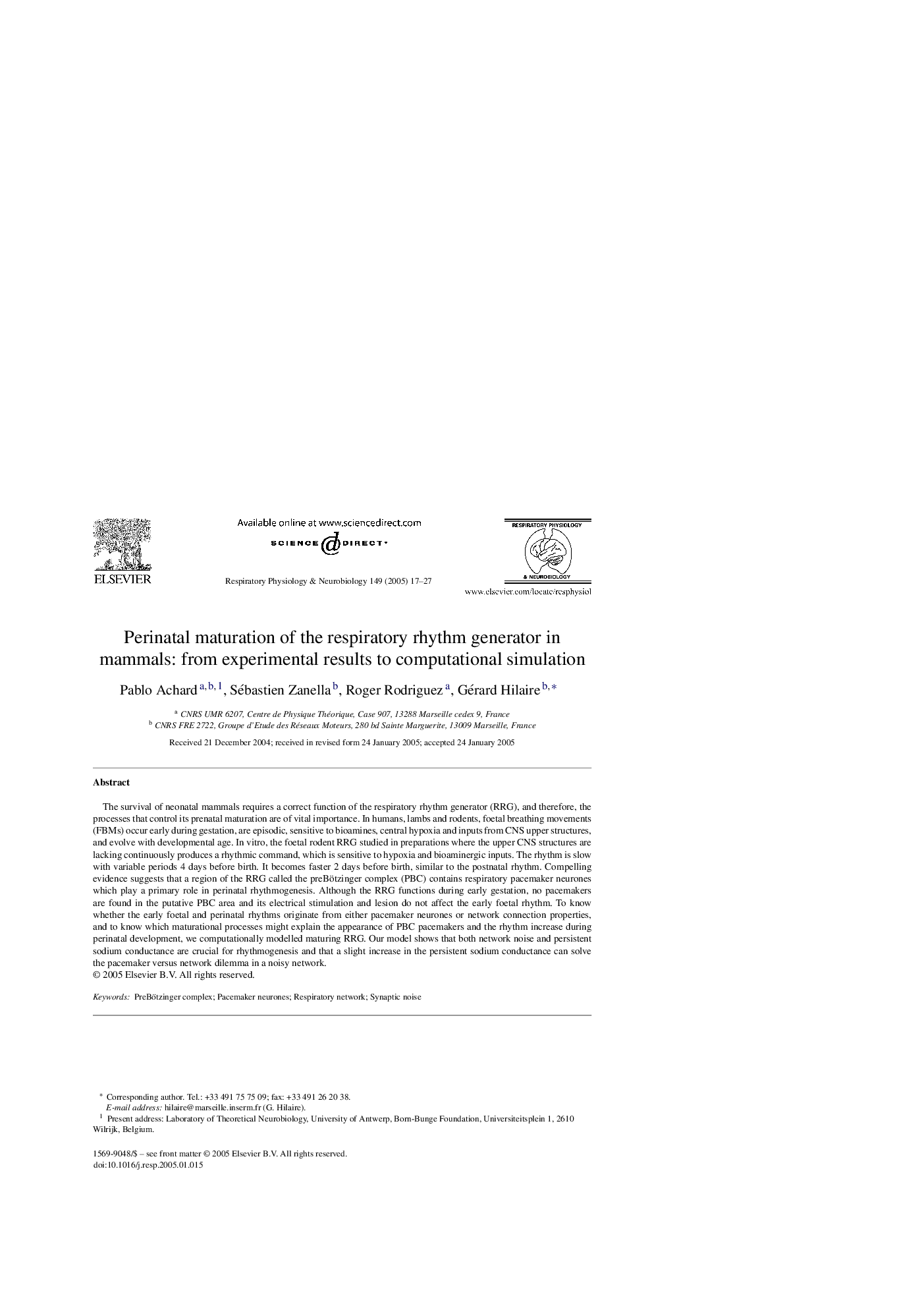| Article ID | Journal | Published Year | Pages | File Type |
|---|---|---|---|---|
| 9152169 | Respiratory Physiology & Neurobiology | 2005 | 11 Pages |
Abstract
The survival of neonatal mammals requires a correct function of the respiratory rhythm generator (RRG), and therefore, the processes that control its prenatal maturation are of vital importance. In humans, lambs and rodents, foetal breathing movements (FBMs) occur early during gestation, are episodic, sensitive to bioamines, central hypoxia and inputs from CNS upper structures, and evolve with developmental age. In vitro, the foetal rodent RRG studied in preparations where the upper CNS structures are lacking continuously produces a rhythmic command, which is sensitive to hypoxia and bioaminergic inputs. The rhythm is slow with variable periods 4 days before birth. It becomes faster 2 days before birth, similar to the postnatal rhythm. Compelling evidence suggests that a region of the RRG called the preBötzinger complex (PBC) contains respiratory pacemaker neurones which play a primary role in perinatal rhythmogenesis. Although the RRG functions during early gestation, no pacemakers are found in the putative PBC area and its electrical stimulation and lesion do not affect the early foetal rhythm. To know whether the early foetal and perinatal rhythms originate from either pacemaker neurones or network connection properties, and to know which maturational processes might explain the appearance of PBC pacemakers and the rhythm increase during perinatal development, we computationally modelled maturing RRG. Our model shows that both network noise and persistent sodium conductance are crucial for rhythmogenesis and that a slight increase in the persistent sodium conductance can solve the pacemaker versus network dilemma in a noisy network.
Related Topics
Life Sciences
Biochemistry, Genetics and Molecular Biology
Physiology
Authors
Pablo Achard, Sébastien Zanella, Roger Rodriguez, Gérard Hilaire,
